Click on images to enlarge
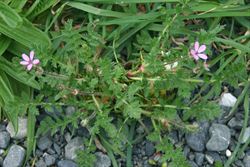
habit (Photo: Trevor James)
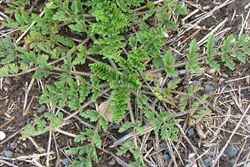
lower leaves (Photo: Sheldon Navie)
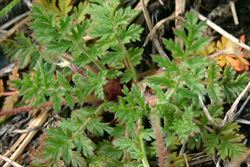
close-up of leaves (Photo: Trevor James)
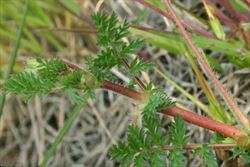
stem and upper leaves (Photo: Trevor James)
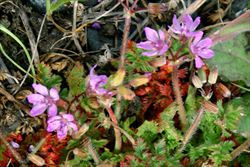
flower clusters (Photo: Trevor James)
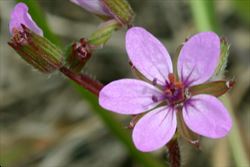
close-up of flowers (Photo: Trevor James)
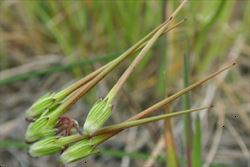
close-up of immature fruit (Photo: Trevor James)
Scientific Name
Erodium cicutarium (L.) L'Hér.
Synonyms
Geranium cicutarium L.
Family
Geraniaceae
Common Names
common crowfoot, common heron's bill, common heron's-bill, common stork's bill, common storksbill, cutleaf erodium, cut-leaf heron's-bill, heron's bill, pin clover, pin grass, pin weed, red-stem filaree, redstem filaree, redstem stork's bill, stork's bill
Origin
The exact native range of this species is obscure, but it is thought to be native to Europe, the Azores, the Madeira Islands, the Canary Islands, northern Africa (i.e. Algeria, Egypt, Libya, Morocco and Tunisia), western Asia, the Indian Sub-continent (i.e. northern Pakistan and north-western India) and eastern Russia.
Naturalised Distribution
Widely naturalised throughout southern and central Australia (i.e. in southern Queensland, New South Wales, the ACT, Victoria, Tasmania, South Australia, the southern and western parts of Western Australia and the southern parts of the Northern Territory).
Also widely naturalised overseas in New Zealand, parts of Asia, the USA, Canada, Mexico, Central America, South America, and Hawaii.
Notes
This species is regarded as an environmental weed in Victoria, Western Australia and Tasmania. Common storksbill (Erodium cicutarium) is a pioneer of disturbed and arid sites. It is a fierce competitor that crowds out or out-competes native plants by producing many seeds that germinate early, depleting soil water levels, and preventing sunlight from reaching the seedlings of other species that germinate later. It may also prevent the establishment of perennial grasses by blocking access to light.
Common storksbill (Erodium cicutarium) is common on sandy soils in Western Australia, from Dirk Hartog Island to the Nullarbor plain, and has invaded conservation areas in arid and semi-arid regions (e.g. Doole Island and Roberts Island near Carnarvon). It is also common in conservation areas in South Australia (i.e. Coorong National Park, Sturt Gorge Recreation Park, Coffin Bay National Park, Cleland Conservation Park, Belair National Park and Lincoln National Park), Victoria (i.e. Roslynmead Nature Conservation Reserve and Brisbane Ranges National Park) and western New South Wales (i.e. Kinchega National Park).
Common storksbill (Erodium cicutarium) is also regarded as a serious threat to one or more plant communities in Victoria and has been listed in the Global Invasive Species Database.

